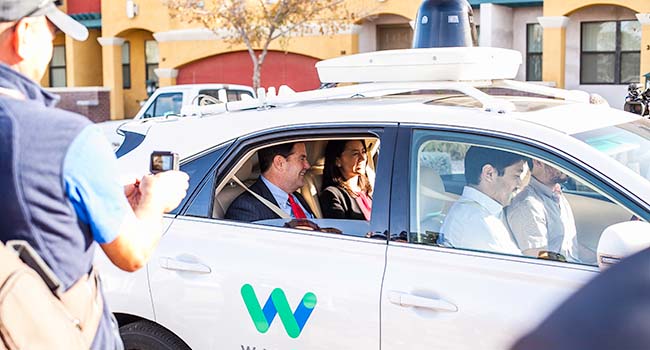Flashing yellow arrows are common sights in the Phoenix metropolitan area. While oncoming traffic is whizzing by, the little arrow flashes, informing you it’s safe to turn left when there aren’t any cars coming your way.
This move takes a little bit of finesse, a human touch, if you will. You have to consider a lot of possible variables, like car speed, distance, pedestrians and more. And of course, that one car just has to put the pedal to the metal, rushing by, making your turn a little tougher.
So, in this crazy age where cars are driving themselves just how would a self-driving car navigate this type of turn?
The folks at Waymo, the self-driving car company that spun off from Google, have created a complex simulation to help teach their cars and software how to navigate through situations such as this one.
Waymo Lead Engineer James Stout explains in a blog post how the self-driving car company created a realistic virtual world where 25,0000 virtual self-driving Waymo cars travel up to 8 million miles daily.
The simulation is home to intersections, based off real places, that are extremely realistic. Everything from the dimensions of the intersection, the lanes, curbs and lights are exactly alike as they would be in the real world.
Virtual Waymo cars then endlessly practice within these simulations, logging and learning important information.
From each simulation, the cars learn to better navigate their way through complex driving scenarios such as the lagging left scenario.
Each iteration of a simulation adds different variables, like cyclists, motorcycles and pedestrians cutting across the intersection. With each new experience, the entire Waymo fleet in reality learns from what the virtual fleet just experienced. Waymo’s simulations does this thousands of times, over and over, logging in thousands of miles.
Then, after the results are shared, Waymo uses its private test track and real-world driving to reaffirm the experiences learned in the simulations.
Waymo has been testing its self-driving cars in the Chandler area and around Phoenix since April 2016. The company recently started trials for the public to start riding in the self-driving cars for their ever day needs. And the company demonstrated this summer how its self-driving cars would navigate around emergency vehicles.
Simulations are playing a vital role in the world of self-driving cars for Waymo. Last year, the California-based company had its cars drive over 2.5 billion simulated miles.
And these aren’t just easy to drive miles, these miles “are far richer and more densely packed with interesting scenarios than the average mile of driving,” writes Stout. “Every mile brings us closer to our goal of putting self-driving cars on the road, helping people, and saving lives. And each of these eventful simulator miles are guiding us to what everyone wants: billions of serenely uneventful miles in the real world.”




